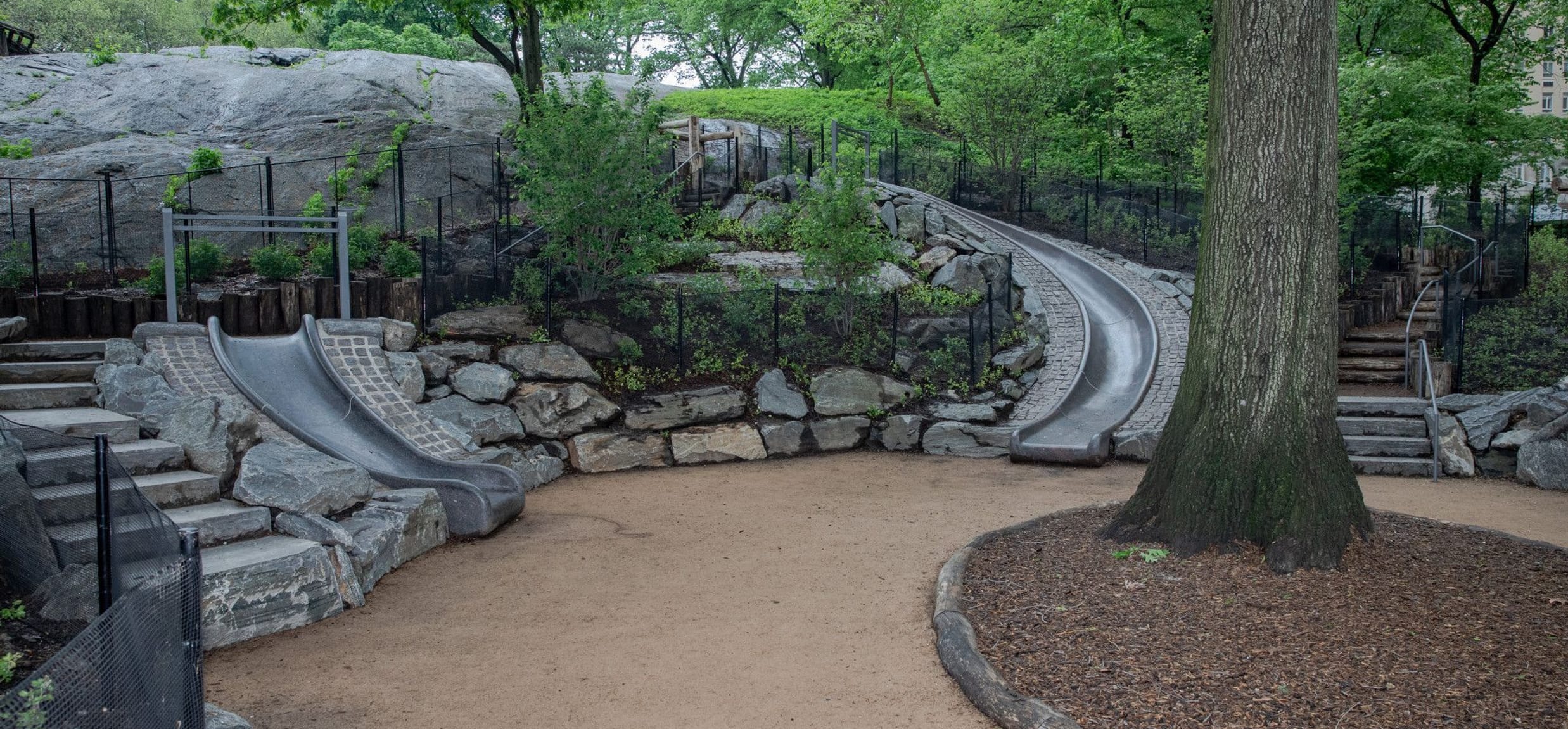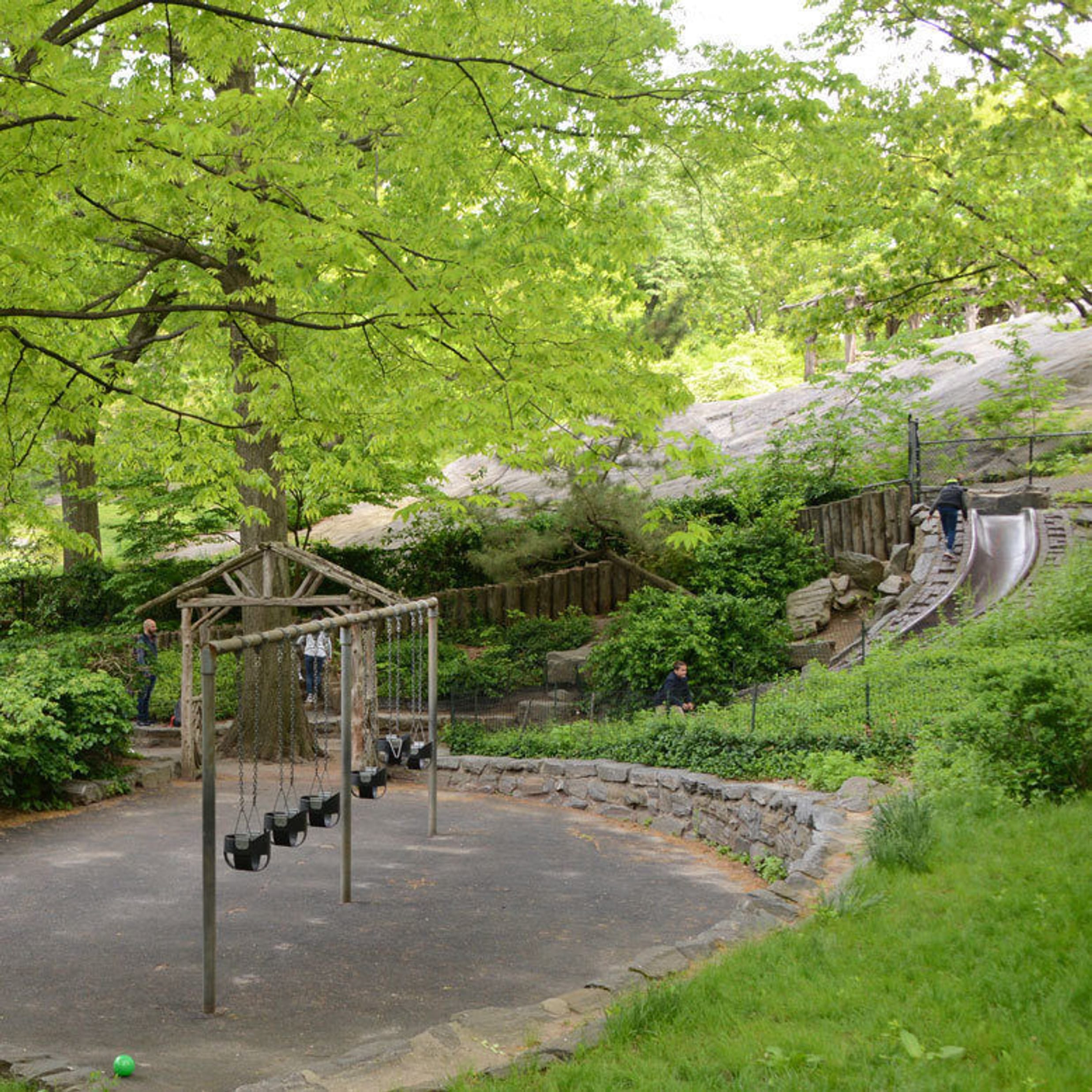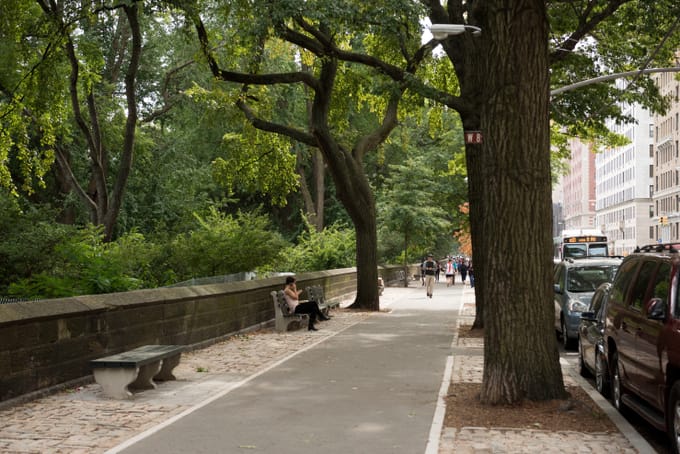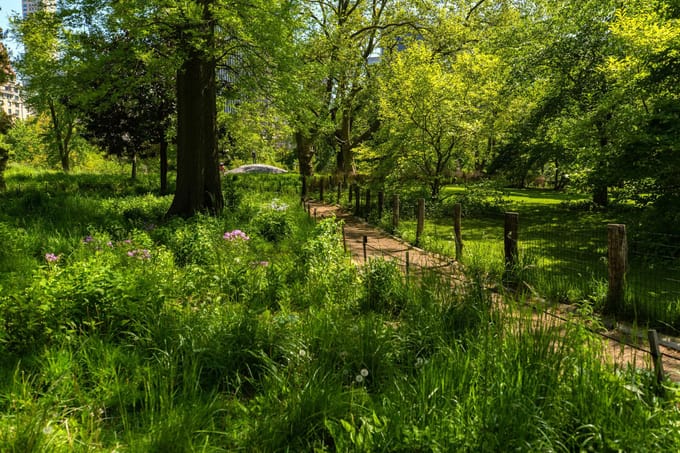Restoration
Billy Johnson Playground Renovation

Our renovation of Billy Johnson Playground preserved and reinforced the rustic character of the playground while increasing the play value and improving accessibility.
Billy Johnson Playground, near the East 67th Street entrance, was designed by pioneering landscape architect M. Paul Friedberg and completed in 1986. It was the first playground reconstructed under the newly formed Central Park Conservancy.
The Conservancy selected Friedberg’s concept from among those of several designers invited in 1981 to submit proposals for a rustic playground inspired by the landscape of Central Park. Friedberg’s design proposal used natural materials at a child scale to echo the Park experience in a contained play environment.

Playground before reconstruction
Billy Johnson Playground contains a miniature stone bridge reminiscent of Gapstow Bridge. Rustic play features evoke the character of the Park, referencing structures like the Dene rustic shelter, which presides over the playground from the large rock outcrop just to the north. Rustic trails meander through the raised plantings – bringing the play experience into the landscape. Extensive plantings divide the space and create a series of outdoor rooms conducive to imaginative play and games such as hide-and-seek. The playground’s most character-defining feature is the 45-foot granite slide, set in a rocky hill that seems to descend from the large rock outcrop itself. In the late 1980s, bucket swings were added in response to community demand.

Tire swing after reconstruction
The restoration of the playground enhanced the original design while meeting the needs of today’s community. Consultation with Mr. Friedberg and the families who currently use the playground informed the Conservancy's plans to recreate aspects of the original design that had been lost over time or were never realized, add new play elements, and address current safety and accessibility standards.
Renovation of Billy Johnson Playground included:
- Establishing a water feature at the amphitheater (as originally intended) and replacing the existing spray bollard with a user-activated spray feature that is interactive and conserves water
- Introducing a net-climbing experience in the existing sand area
- Creating a second granite embankment slide, to provide an accessible slide and accommodate younger visitors
- Replacing current bucket swings to comply with current safety standards, and introducing a tire swing for greater variety
- Expanding the existing rustic arbors at the entrances to the play area, with a more extensive rustic pergola and benches to provide seating for caregivers, while better integrating the swing area into the character of the larger design
- Replacing deteriorated timber edges of paths and roof of the existing pergola
- Regrading and repaving the playground and paths leading to the playground from Fifth Avenue
- Enhancing and diversifying plantings throughout the playground
See our project plans and renderings.
This project is part of the Conservancy’s effort to guide the continued stewardship of Central Park’s 21 playgrounds, as outlined in Plan for Play: A Framework for Rebuilding and Managing Central Park’s Playgrounds.

Slide after reconstruction



